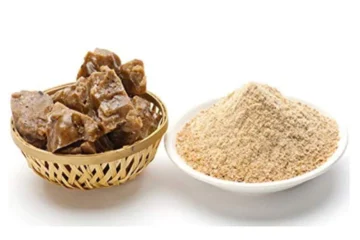What is Asafoetida, and How Does It Affect the Flavor of Baked Goods?
Short Answer: Asafoetida, or hing, is a pungent spice commonly used in Indian cuisine. In baking, it adds a unique umami flavor, often described as a mix of garlic and onion.
Long Answer:
- What is Asafoetida?
Asafoetida, also known as hing, is a gum-resin extracted from the roots of Ferula plants. It’s renowned for its strong, pungent aroma and distinctive flavor, which can be likened to a blend of garlic and onion. Used extensively in Indian cuisine, asafoetida has found its way into various culinary traditions worldwide. Its unique flavor profile makes it a versatile ingredient that can enhance both savory and sweet dishes.
- Flavor Impact in Baking:
When used in baking, asafoetida imparts an umami richness that can elevate the overall taste of bread, cakes, and pastries. Its flavor profile is particularly beneficial in savory baked goods, adding depth and complexity. For instance, a pinch of hing in garlic bread or focaccia can transform the dish, making it more aromatic and flavorful. Even in sweet pastries, asafoetida can add a subtle, intriguing note that complements other ingredients.
- Usage Tips:
When incorporating asafoetida into your baking, it’s essential to use it sparingly. A small pinch is often enough to achieve the desired flavor without overpowering the dish. Additionally, asafoetida should be dissolved in warm water or oil before being added to the dough or batter, ensuring even distribution and enhancing its aromatic properties.
Are There Any Health Benefits or Potential Side Effects of Using Hing in Baking?
Short Answer: Asafoetida has numerous health benefits, including digestive aid and anti-inflammatory properties. However, excessive use may cause gastrointestinal discomfort.
Long Answer:
- Health Benefits:
Asafoetida is known for its numerous health benefits, including:
- Digestive Aid: Helps in reducing bloating and indigestion by promoting the secretion of digestive enzymes.
- Anti-Inflammatory: Contains compounds that reduce inflammation in the body, making it beneficial for conditions like arthritis.
- Antimicrobial: Has properties that combat harmful bacteria and viruses, aiding in overall immune health.
- Respiratory Health: Asafoetida can help relieve symptoms of respiratory conditions like asthma and bronchitis due to its expectorant properties.
- Potential Side Effects:
While hing is generally safe in small quantities, excessive consumption can lead to gastrointestinal discomfort, such as gas and diarrhea. It’s essential to use it sparingly to avoid any adverse effects. Pregnant and breastfeeding women should consult with a healthcare professional before using asafoetida, as its safety during pregnancy and lactation has not been fully established.
Can Hing Be Used as a Substitute for Other Ingredients in Traditional Baking Recipes?
Short Answer: Yes, asafoetida can be used as a substitute for garlic or onion in baking recipes, especially for those seeking a unique flavor profile.
Long Answer:
- Substitution for Garlic or Onion:
Asafoetida is an excellent substitute for garlic and onion, particularly for those with dietary restrictions or preferences. It offers a similar pungent flavor, making it a versatile ingredient in various baking recipes. This substitution is especially useful in gluten-free or vegan baking, where traditional flavor enhancers may be limited.
- Usage Tips:
When substituting hing for garlic or onion, start with a small amount, as its flavor is potent. Typically, a pinch of asafoetida can replace a clove of garlic or a small onion. Adjust to taste based on the recipe requirements. Additionally, asafoetida can be paired with other spices like cumin, turmeric, and coriander to create a well-rounded flavor profile.
- Creative Uses:
Beyond traditional baking, asafoetida can be used creatively in fusion recipes. For example, incorporating hing into savory muffins or crackers can add a unique twist, making them stand out. Experimenting with different combinations can lead to discovering new and exciting flavors.
What Types of Bread, Cakes, or Pastries Work Best with Asafoetida?
Short Answer: Savory bread, such as garlic bread, and pastries like savory tarts work best with asafoetida, enhancing their umami flavor.
Long Answer:
- Best Breads:
Asafoetida works exceptionally well in savory bread recipes. Examples include:
- Garlic Bread: Hing adds an extra layer of flavor to traditional garlic bread, making it more aromatic and enjoyable.
- Focaccia: Incorporating asafoetida into focaccia dough enhances its savory taste, creating a more complex flavor profile.
- Flatbreads: Adding a pinch of hing to flatbreads like naan or roti can make them more flavorful and aromatic.
- Best Cakes and Pastries:
While hing is less common in sweet baking, it can add a unique twist to certain pastries, such as:
- Savory Tarts: Enhances the umami profile of savory tarts and quiches, making them more delicious and satisfying.
- Herb Cakes: Asafoetida pairs well with herb-infused cakes, offering a balanced flavor that complements the herbs.
- Cheese Pastries: Adding a touch of hing to cheese-filled pastries can create a more robust and complex flavor.
- Innovative Recipes:
For those looking to experiment, try incorporating asafoetida into innovative recipes like:
- Savory Scones: Hing can add depth to savory scones, making them a delightful treat for any time of day.
- Spiced Crackers: Enhance homemade spiced crackers with a pinch of asafoetida for an unforgettable flavor.
- Stuffed Bread: Use hing in the filling for stuffed bread to create a unique and aromatic dish.
How Should I Store Asafoetida to Keep It Fresh for Baking Purposes?
Short Answer: Store asafoetida in an airtight container in a cool, dark place to maintain its freshness and potency.
Long Answer:
- Storage Tips:
To ensure asafoetida remains fresh and potent for baking:
- Airtight Container: Store hing in an airtight container to prevent exposure to air and moisture.
- Cool, Dark Place: Keep the container in a cool, dark place, away from direct sunlight and heat sources.
- Separate Storage: Asafoetida has a strong aroma, so store it separately from other spices to avoid cross-contamination.
- Shelf Life:
When stored properly, asafoetida can retain its flavor and potency for up to a year. Regularly check for any signs of clumping or loss of aroma, indicating it may be time to replace it.
Conclusion
Incorporating asafoetida (hing) in baking can add a unique, savory twist to your bread, cakes, and pastries. From enhancing flavor to offering health benefits, this versatile spice has much to offer. With proper storage and usage tips, you can experiment with hing in various baking recipes to create delicious and aromatic baked goods. Enjoy exploring the world of asafoetida in your baking endeavors!





